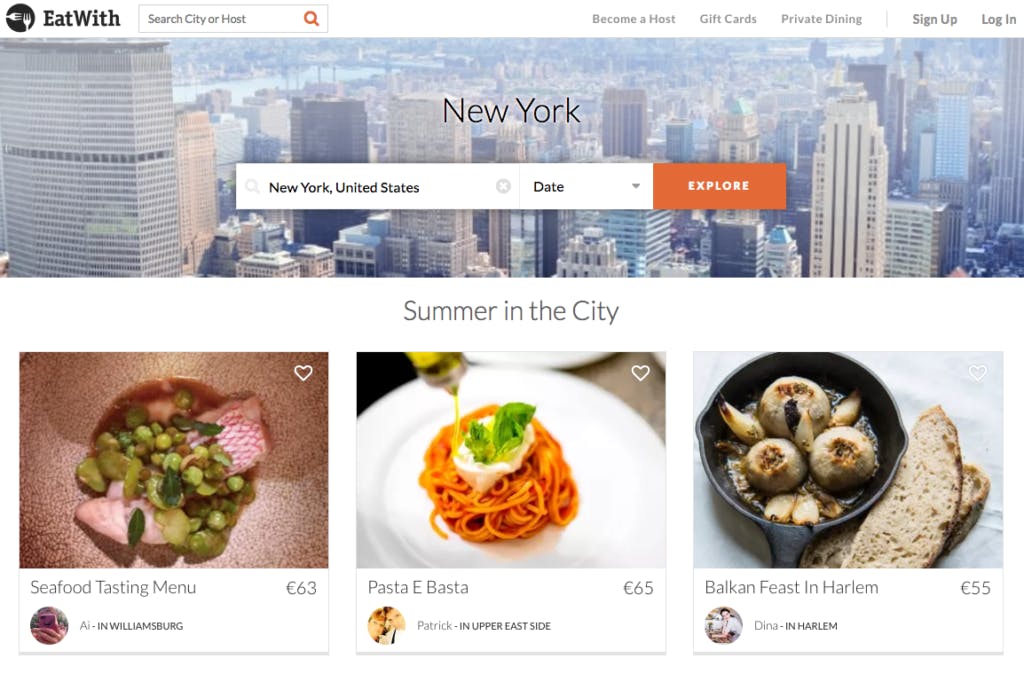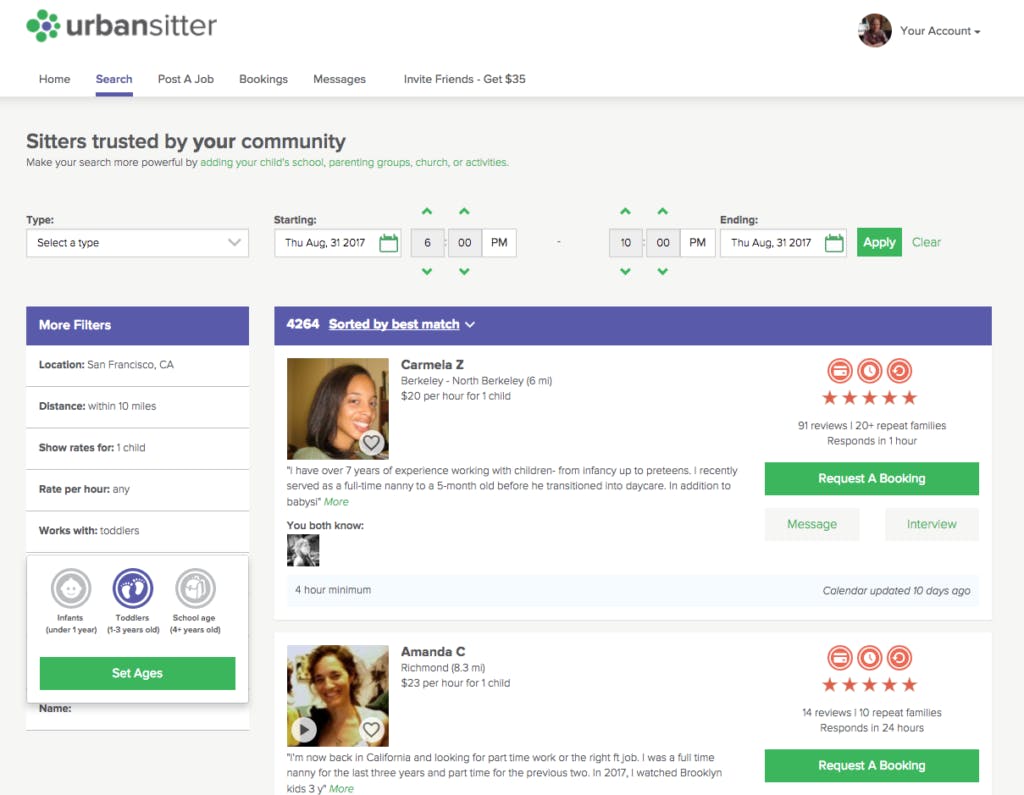Focus your marketplace on one city and one vertical
Tackle the chicken-or-egg problem with an extreme focus.
Published on
Last updated on

Having too broad a focus is the most common mistake early-stage marketplace entrepreneurs make. In this article, we discuss a simple way to avoid this mistake: start from one city and focus on a single vertical.
Over the years, I've talked to numerous founders of successful online marketplaces. I always ask them what the worst mistake they've made is. One answer comes up over and over again: they tried to scale to new verticals (product or service categories), cities, or countries too quickly.
Why did they all make this mistake? Because, intuitively, it makes a lot of sense. This is how the thinking goes: the broader the focus, the broader the potential user base, and the faster my marketplace will grow. Startup founders, in particular, are taught to constantly think the only thing that matters is the speed of growth. To make matters worse, investors like to hear about scaling strategies from startup founders. If someone can scale rapidly, it means they're a good investment target. In fact, (bad) investors typically encourage marketplace founders to scale quickly to new markets.
The problem is that with two-sided platforms, the speed of growth is the wrong marketplace metric to optimize for. As a marketplace founder, you certainly need to move quickly—time is money, after all, and you have limited resources. But the speed you should maximize for is the speed of learning, iteration, and finding product-market fit. Rapid expansion of focus slows down learning. The bigger you are, the slower it is for you to iterate, learn new things, and change direction when needed. Additionally, the bigger you are, the faster you're burning money, which means less time to learn from your mistakes.
I've found the following rule of thumb to be extremely effective: if your customers and providers need to meet each other physically, you should start from one city and focus on just one vertical. In this article, I'll show how this approach benefits you in five areas: managing user expectations, adapting your language, onboarding your users, offering a great customer experience, and offering a great provider experience.
This video is the third lesson in our ten-step video course on building a successful marketplace.
To repeat what we've said many times, your first job as a budding marketplace founder is to achieve liquidity. Your providers need to have a high likelihood of making a sale and your customers need have a high likelihood of finding what they're looking for. Achieving this is a lot easier if you focus only on an extremely narrow group of customers and providers. Keep in mind the classic advice startup guru Paul Graham gave to Airbnb founder Brian Chesky: it's better to have 100 people love you than a million people that sort of like you.
To do this, you want to have extremely targeted messaging. A great example of this is "Rent a bike in Oxford". This was the message Cycle.land started with. Their approach helped them raise a large equity crowdfunding round later on. The beauty of this message is that you immediately know whether you're in the target group or not. If I'm in Oxford and I need a bike, I can be sure to find what I'm looking for. Otherwise, there's no reason for me to continue browsing the site.
Let's take another example message: "Rent tools from your neighbors". This message is a lot more vague. If I'm in Chicago and I need a lawnmower, will I find it from the site? If the site is small and doesn't have many providers, I'm likely to be disappointed. With this type of message, you might get a lot more visitors to your site—a lot of people find the idea of being able to easily rent tools from their neighbors intriguing—only to disappoint most of them.
Of course, there's no reason to completely neglect the people who are currently not in your geographical target group. Some of them might really like your concept and could be valuable leads later on. To capture them, you could have a simple signup form to get their city and email address, and if you ever launch there, you can notify them.
It's not enough to tell what your marketplace is about. How you tell it matters a great deal. To get your first 100 users to really love you, you will need to turn your marketplace into a community. Typically, the best marketplace metric for product/market fit is repeat purchase ratio: people need to come back after making their first transaction on your platform. Having a community helps a lot with this metric.
An important part of building this feeling of community is to speak the language of your users. What are the exact words and phrases they use? What are their problems and issues that are specific to this particular city and vertical? As Joel Serra, who helped EatWith launch in several cities, explains:
– The incentives that the hosts in Barcelona were looking for, and the relationship they wanted with us, was very different than with the hosts in New York. The same goes for the guests: the dinners they were looking for, the experience they were after, and their willingness to pay were totally different.
Serra learned that whenever they entered a new market, they needed to adapt their platform, marketing strategy, and language to the specific needs of that market.

Let's do a thought exercise. How many hours of work do you expect it'll take to get your first 100 transactions? Have a figure in your head? Great. Now multiply it by 10 and you're probably closer to truth.
Building the initial supply for a marketplace is often manual work. You will likely end up onboarding your first 100 suppliers manually, sitting next to them as they add their offerings to your platform. However, meeting your first providers has several benefits: they are more likely to become engaged with your platform, you'll get to curate the content they add, making sure it's high quality, and you get valuable feedback on how to improve the onboarding process. Naturally, doing this becomes harder or downright impossible if your providers span across several cities or countries.
Matching your initial supply with demand can be even harder than building the supply. Again, being in the same city as your customers helps a lot since it allows you to use local tactics. You can go to local events and meetups, talk to the local press (local magazines are more likely to offer visibility to a company the comes from their home city), and meet the local influencers to get them to spread the word. Taking a manual approach also with the matching process can have powerful benefits.
Because manual onboarding is time-consuming, you need to find the right people to talk to. Stopping random people on the street or in a coffee shop is rarely a good idea. Focusing on a vertical helps a lot. For instance, Cycle.land knew they needed to target people who cycle, which resulted in them heading to meetups and communities for cyclists. If your marketplace is about renting everything, it is harder to justify attending a cyclist meetup, and they might have a hard time understanding why you're there.
A narrow focus also helps with scalable marketing tactics, like content marketing and search engine optimization. Local content marketing is much easier than global content marketing. Because there's less competition, achieving a good ranking in search engines is also easier to achieve if you can target both a local area and a specific vertical.
Focusing on a specific vertical helps you build the right kind of customer experience for your platform. Every marketplace has its own unique booking flow. Let's examine a few examples where the chosen vertical matters a great deal.
Consider a marketplace for booking two types of home services: cleaning and babysitting. On the surface, it would sound logical to offer both of these in the same marketplace. Both would go into the same cell in the booking matrix (specific location, scheduling, and either fixed or packaged pricing). The same customers (busy parents) might be interested in both, so there's clearly some synergy.
In practice, however, there are a few critical differences. For cleaning, you want a certain job done. It doesn't matter how long it takes (as long as the cost is the same), just that it gets done. Meanwhile, a babysitter needs to be around at a specific time for a certain number of hours. Because of this, the booking experiences for these two tasks are quite different, and two completely different user interfaces are required.
Marketplace trust also matters much more with babysitters than with cleaners. You might be ok with having a new cleaner every week but still insist on always booking the same babysitter. The babysitters on a babysitting marketplace will likely need to have a more thorough background check than cleaners.
The process of finding the right provider differs as well. For instance, if you are searching for a babysitter from UrbanSitter, you can filter the providers by attributes like spoken language, the age group the sitter prefers to work with, and experience with special conditions like ADHD or diabetes. Finding the right home cleaner requires a very different experience.

For all these reasons, starting a marketplace that focuses on both babysitting and home cleaning services—at least in the beginning—is likely not a good idea. It's always possible to expand to other verticals later on—for instance, cleaning marketplace Handy now also offers furniture assembly and moving help—but it should be done only once you've established a clear product/market fit in your initial vertical and have enough resources to broaden your focus.
Let's take another example: a peer-to-peer rental marketplace for gardening tools. Surely all of them have a similar booking experience? Not so fast. Several dimensions need to be considered, one of the most critical ones being price. You might be able to buy a chainsaw for less than $100. Meanwhile, if you have a large lawn and need a riding mower, you might be looking at a price tag of more than $10k.
If you're dealing with items worth $10k, covering damage and theft yourself might be too big a burden, so you might need to strike a deal with an insurance company. If your typical item's value is $1k or less, an insurance company would be overkill; instead, you could either cover damages yourself or require a refundable deposit from customers.
Cycle.land noticed that the issue of price variance also applies to bicycles. Early on, they decided to focus only on affordable, everyday bikes. This allowed them to get started without heavy processes like deposits or insurance, which helped them make the experience lightweight for their users. Meanwhile, many of their competitors focus on expensive, high-end bikes, requiring them to typically include insurance.
Let's consider lawnmowers again. It's important to understand your customers' use cases. For mowers, one use case might be a test drive: the renter wants to try out a machine before buying it themselves. In such a case, your users would need to be able to find the specific mower they're interested in. Thus, a search experience tailored for lawn mowers would help.
When thinking about your marketplace's future, the size of the total market is, of course, important. The market for peer-to-peer lawn mower rentals might not be huge. Nevertheless, instead of starting a marketplace that offers all possible garden tools, starting with only lawnmowers and building a really good customer experience around them is a good strategy. After you've nailed this core segment and built a loyal initial user base, you can then move on to other tools, category by category.
It's always a useful thought exercise to consider whether you could narrow down your target vertical from the one you currently have.
One of the most common marketplace concepts I encounter is a platform for local experiences, so I think this example is worth mentioning even if I keep repeating myself a bit. Surprisingly many founders of such marketplaces don't have any plans to narrow down their niche from this initial concept. I think this is a mistake.
Several types of local experiences exist out there. There are the educational ones, where you learn a new skill like local cooking or pottery. There are the culinary ones, where you get to experience new tastes. There are extreme sports. There are experiences suitable for families, bachelor parties, couples, or thrill-seeking individuals. There are experiences that can be provided by individuals, and others provided by professional companies.
Decide only on a single type of experience, a single type of customer to target, and a single group of providers. Trust me, you just greatly increased your chances of succeeding.
Typically, the vertical of a marketplace is determined by its providers. Let's now consider a marketplace with a customer vertical instead. An example I often encounter is wedding services. Wouldn't it be great if I could book the venue, the catering, the photographer, the band, and the wedding planner from the same site, and manage all of these bookings through a unified event experience?
Such a concept sounds promising, and I've seen many people try it. Unfortunately, I haven't seen anyone build a successful business around it. To me, the reason seems obvious. As we saw above, booking a photographer is simply a vastly different experience than booking a caterer or a venue. Anyone trying to bake all of these provider verticals into a single marketplace essentially needs to build several marketplace experiences into a single platform. I've seen some people do exactly that. A lot of money was burned and development time spent before launching to the first customer. Perhaps one of these platforms will succeed and prove me wrong, but I'm not holding my breath.
There's also another problem with these "customer-focused" platforms. As they usually deal with professional providers, it's not enough to build a great experience for customers. Most of the magic usually happens on the provider side. We'll look into that next.
If you're building a B2C (business to consumer) service marketplace, you often need to offer a comprehensive set of tools to your providers to keep them using your platform for recurring transactions. Your marketplace will likely evolve to become a full-blown CRM (customer relationship management) system. This is what the folks at Point Nine Capital, a marketplace-focused VC firm, call SaaS-enabled marketplaces.
A good example of such a platform is The Food Corridor, a marketplace for commercial kitchens. The booking system of such spaces is quite complicated as they usually offer storage space, equipment, and other services that affect the price. They often deal with recurring customers and sometimes have subscription pricing. Some kitchens have several spaces that can be rented out to different people at the same time.
Most of the functionality of The Food Corridor lies in the backend it offers to its providers. The backend is tailored to the specific needs of commercial kitchens. It would be extremely tricky to serve any other type of spaces with the same backend, or to serve commercial kitchens well enough with functionality that was designed to cater to other types of creative spaces.
MyTime has long been the torchbearer of B2C marketplaces that aim to offer a CRM system for different types of service providers. However, based on their recent moves, it seems they might be moving away from their initial strategy to focus on their most lucrative niche: hair and beauty salons. This is the provider group they currently highlight the most on their website, and the only one they offer a dedicated landing page for. They also offer salon tools that are not needed by other service industries, like the ability to track the number of hair products that were used for each customer.

A common counterexample to the "one city" rule is a marketplace for tourists. Airbnb is, of course, the poster child for such platforms. In these marketplaces, the customer and provider will be in the same physical place when the service is offered, but usually in different cities when the booking is made. In such cases, it makes no sense to build a platform where customers and providers need to be in the same city. However, it's still possible to focus on having one of these sides in one city only.
This strategy worked for Airbnb. While the platform has always been open to anyone around the world, the team initially struggled to get traction. When they participated in the Y-Combinator accelerator, Paul Graham asked them where the majority of their hosts were. They told him New York was their biggest city. Graham's response: "Then why aren't you there?"
The team immediately flew from Mountain View to New York and started spending time with their hosts. After learning enough from the hosts, they managed to make adjustments that made bookings in New York soar. Airbnb still relies heavily on having a dedicated team in each city that becomes a major destination for them.
You can still allow providers from other cities to sign up, but you will want to focus all your marketing efforts on your initial target city.
Since you're starting from a single city, the choice of the city matters a great deal. The most obvious city is the one you live in. You're already there, you know the local culture, and likely have a network that can help you get started. Local press will love the story of a local entrepreneur.
However, this is not always the right choice. You need to pick a city where there's a large enough market for your particular concept. Not every marketplace can work in every city.
Your home city might not have a climate suitable for the particular activity you're focusing on. Rob Bonvetti, founder of The Quiver, was a surfing enthusiast from New York. As the surfing scene in the West Coast was a lot bigger than in the East, Bonvetti realized that to make his peer-to-peer surfboard rental marketplace work he needed to conquer the West and decided to relocate himself to California.
Sometimes your home city just isn't large enough. The Airbnb founders were living in Mountain View, but to really prove their concept, they needed to focus on a place with lots of tourists. Hence, they started flying regularly to New York.
Sometimes other conditions might favor the new city. Tristan Pollock, the founder of short-term rental marketplace Storefront, launched his first Minimum Viable Platform in Minnesota. Soon after, the team got accepted into the AngelPad accelerator, which offered them a great opportunity for network and funding but required them to move to San Francisco.
If you decide to choose a city other than the one you're living in, you need to keep in mind two things. First, you actually need to have a physical presence in that city. If you don't move to the city permanently, you need to spend a lot of time there, as the Airbnb founders did. Second, you need to focus your resources on that city alone. For instance, after moving to San Francisco, the Storefront team realized the only sane choice was to close their initial Minnesota market and focus only on San Francisco.
In this article, I laid out the five areas in which starting from one city and focusing on a single vertical benefits you. These five areas are managing user expectations, adapting your language, onboarding your users, offering a great customer experience, and offering a great provider experience.
Managing user expectations is easier when you focus on one city and one vertical, as people will more likely find what they are looking for. When you know who your users are, you can speak to them using language they understand. As you often need to onboard your first users manually, it's useful if they are in the same city as you. And finally, focusing on a single vertical helps you build the right kind of search and booking flow for your customers, and tailor the backend to fit the specific needs of your providers.
Naturally, there are exceptions to every rule. In this case, the most well-known one is Thumbtack, a popular marketplace for service professionals that was recently valued north of $1 billion. When they launched, they decided to offer every type of local service in every region of the U.S. For them, this turned out to be a good strategy. How is this possible? That's a question we will explore in our article on why Thumbtack succeeded.
Also, some key questions have been left unanswered in this article: when is a marketplace ready to scale? And how to scale in a way that avoids the problems laid out in this article?
In my experience, this boils down to three stages, and I've written guides for each of them: reach problem-solution fit, reach product-market fit—and then scale your marketplace, one new market at a time.
You might also like...

The marketplace business model guide
Learn how the marketplace model works and brings benefits to all parties involved: the sellers, the buyers, and the marketplace owner.

Marketplace pricing: How to set the right take rate
The right marketplace pricing level depends on many different factors internal or external to your marketplace. Here's what you should consider to find the optimal pricing level for your marketplace.

Productivity – The North Star for Marketplaces
Josh Breinlinger, VC at Jackson Square Ventures, shares his advice on what marketplaces should strive for.
Start your 14-day free trial
Create a marketplace today!
- Launch quickly, without coding
- Extend infinitely
- Scale to any size
No credit card required
